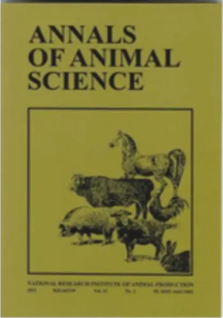Document type: scientific article published in Acta Veterinaria Scandinavica
Authors: Søren Saxmose Nielsen, Ida Sofie Thuesen, Helena Mejer, Jørgen Steen Agerholm, Stine Thorsø Nielsen, Pikka Jokelainen, Stig Milan Thamsborg, Peter Sandøe
Preview: Background: Populations of unowned unsocialised cats are present worldwide. Generally, there is concern about their welfare. Low body condition score (BCS) is a potentially relevant indicator that is relatively easy to assess: emaciated cats are likely to have welfare problems while thin cats may be at risk of becoming emaciated. The objective of this study was to assess the association of low BSC with a selection of factors relating to the host, disease, and infection in unowned unsocialised domestic cats. We necropsied 598 euthanised unowned unsocialised cats from Denmark. We recorded each cat's age-group, sex, and neuter status, together with its pregnancy status, the season and location of trapping, as well as gross lesions at necropsy. We also tested for feline immunodeficiency virus and feline leukaemia virus, recorded presence of ectoparasites, and a subsample of the cats were also tested for endoparasites. Cats with no or sparse adipose deposits were categorized as having low BCS, and logistic regression was used to determine the factors associated with low BCS.
Results : Of the cats, 11.4% had low BCS. Season, age-group and sex were associated with low BCS and confounded potential associations with other variables. Intact adult males and females in spring and early summer were at highest risk of low BCS. When these factors were taken into account, cats with biting lice had 2.8 (95% confidence interval (CI) 1.4-5.4) times higher odds of low BCS, and cats with gastrointestinal findings (i.e., enlarged mesenteric lymph nodes, abdominal hernia, diarrhoea, obstructive foreign bodies, or diaphragmatic hernia) had 50 (95% CI 10-417) times higher odds of low BCS, than cats with no such findings. Cats with low BCS were primarily adult intact cats with tooth lesions and skin lesions, ear mite infection, and positive test result for feline immunodeficiency virus.
Conclusions : The results highlight associations that can be used to define a risk profile: low BCS, notably in summer-autumn, in an unowned unsocialised cat was associated with underlying, less visible problems. Thus, low BCS can be more than a step towards being emaciated; it can also be an indicator of other underlying welfare problems.





